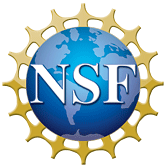Colloquium Abstract - Gorski - 2025Feb21
February 21, 2025
11:00am Mountain
Mark Gorski (Northwestern)
New Phenomena Around Supermassive Black Holes: Dynamics and Chemistry
Abstract
In 1982 Blandford and Payne predicted that magnetic fields are fundamental for accretion onto supermassive black holes (SMBHs). Magnetic field lines anchored in the disk accelerate a wind via the centrifugal force, allowing for the angular momentum to be transferred out of the system and gas to accrete onto the central compact object generating an active galactic nucleus (AGN). The wind can form a few Schwarzschild radii from the SMBH up to the nuclear torus. Almost a half century later, the detailed mechanisms of SMBH growth are still a passionate area of research. Astronomers currently debate whether winds are fuelled by jets, mechanical winds, or radiation, with magnetic processes being the least accepted explanation. Here I present detailed ALMA observations of the most compact and opaque galactic nuclei in the universe, appropriately named compact obscure nuclei (CONs). CONs represent a significant phase of galactic nuclear growth, with opaque and compact centers (r <100 pc), that conceal growing SMBHs. The analysis of these observations reveal a wind that exceeds theoretical maximum momentum for an AGN feedback powered galactic wind. The extreme momentum implies the existence of a magneto hydrodynamic (MHD) wind. The wind is highly collimated and rotates out to 100pc above the galactic nucleus. Furthermore, abundances of complex organic molecules rival SGR b2 and Galactic hot cores in the nucleus. These results imply that growth of SMBHs is very similar to the growth of hot cores or protostars, and feedback from an AGN is not necessary to drive a galactic wind..
Local Host: Juergen Ott




Connect with NRAO